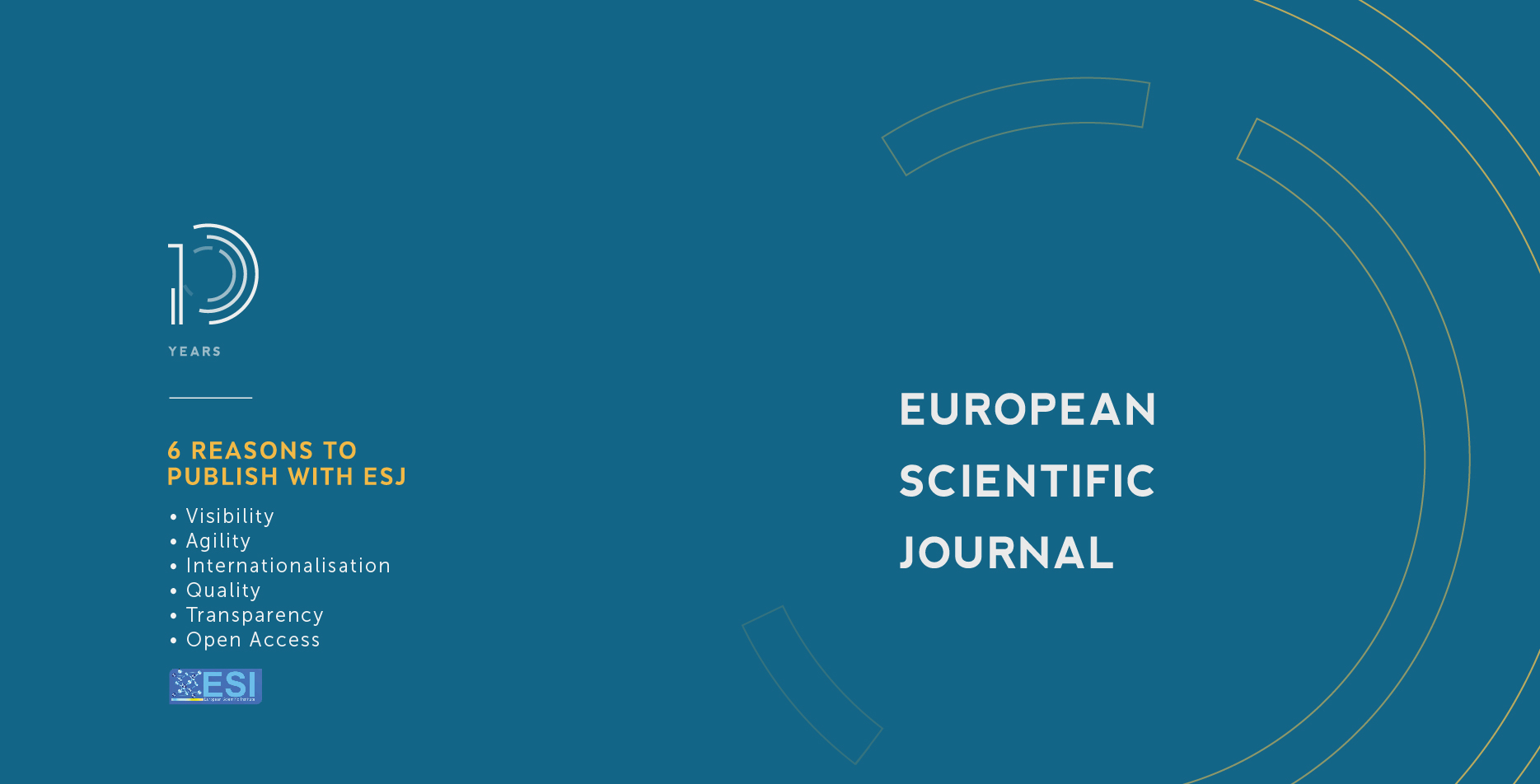Phytosanitary Practices And Evaluation Of 17 Pesticides Residues In Tomatoes Fruits Produced In Foumbot District Western Highland-Cameroon
Abstract
The involvement of pesticides in agriculture requires the implementation of best phytosanitary practices in order to guarantee the health of populations and preserve the environment. This study focused on the assessment of phytosanitary practices of tomato producers in Foumbot, European Scientific Journal, ESJ ISSN: 1857-7881 (Print) e - ISSN 1857-7431 January 2021 edition Vol.17, No.3 www.eujournal.org 31 Western Highlands-Cameroon, and evaluated the residues of 17 pesticides in tomatoes. The methodological approach consisted of field investigations by survey, collection of samples, pesticide residue extraction using QuEChERS method, and their analysis by gas chromatography tandem mass spectrometry (GC-MS). Survey of 100 farmers showed that, they did not comply with the instructions for the use of plant protection products: 56% of farmers interviewed increased the dose of products when they noticed its ineffectiveness; 93% did not the respect pre-harvest intervals; while 77% increased the application frequency at the time of fruiting. All the producers work without personal protective equipment (PPE) and 68% of them use empty packaging for packaging consumable including water, red oil and palm wine. The reuse of empty packaging could expose populations (producers and consumers) to numerous health risks. Regarding pesticides residues, 03 actives ingredients were detected and quantified in the samples, all the samples were contaminated by lambda-cyhalothrin, 86.66% by cypermethrin and 66.66% by acetamiprid. Moreover, residue concentrations above the maximum residue limit (MRL) were found in all the positive samples of lambda-cyhalothrin, and 92.30% of cypermethrin positive samples. This study shows that utilization of plant protection products in Foumbot requires extensive monitoring with producers, in order to reduce risk of consumers exposure.
Downloads
Metrics
PlumX Statistics
Copyright (c) 2021 Sopkoutie NGK, Abdulai AN, Tarla DN, Djeugap FJ, Galani YJH, Ekengoue CM, Tabang WM, Nya E, Payne VK

This work is licensed under a Creative Commons Attribution-NonCommercial-NoDerivatives 4.0 International License.








